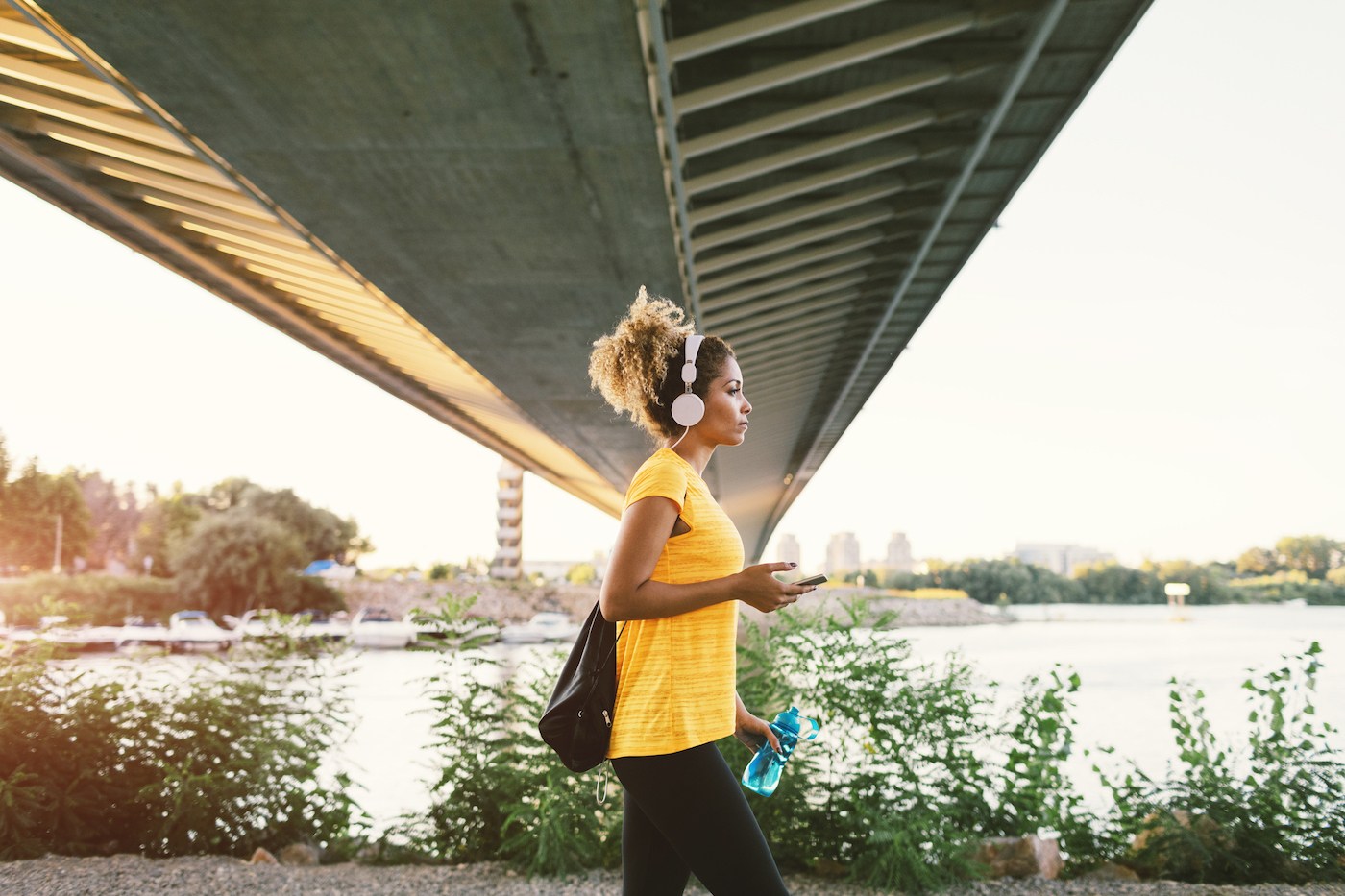Get the Blood Moving in Your Legs With 5 Simple Exercises for Circulation
Aside from setting calendar reminders to ensure you're getting up and walking around at least every couple hours, there are also some exercises and stretches you can do to make sure you keep the blood in your legs moving. When it comes to getting the blood moving in your legs, these are the top exercises for circulation, according to Schramm.
The best leg exercises for circulation
1. Glute bridges
How it helps: "Sitting has the effect of 'turning off' your glutes—meaning if they're not required for a long period of time, the glutes will stop functioning properly," says Schramm.
How to do it:
- Lie on your back with your hands by your sides, knees bent, and feet on the floor. You should be able to touch your heels with your fingertips.
- Press the backs of your arms into the floor and lift your hips up on an exhale, digging your heels into the floor. Keep your core active by pulling your belly button to your spine.
- Inhale to lower down.
- Repeat for 15 to 20 reps after a long period of sitting.
Variation: If you're looking to make this more challenging, you can lift one leg off the floor, or hold at the top position for 5 to 10 seconds.

{{post.sponsorText}}
2. Leg Swings
How it helps: "Leg swings are a classic track warm-up, which is a form of dynamic stretching that increases the range of motion of a joint and the blood flow to your muscles," says Schramm.
- This exercise is best done in a doorway at home. Begin in the center of the door frame with one of your hands on the frame for stability.
- Keeping your core active and both shoulders and hips squared forward, begin swinging your leg back and forth, creating momentum. Be sure to stand up tall and avoid allowing the motion of the leg to pull you out of alignment.
- Repeat 10 to 15 times, then switch legs.
3. Foam rolling
How it helps: "The objective of foam rolling is to place pressure on the tissue, which brings blood flow to the muscles," says Schramm.
How to do it:
- Start in a seated position with the legs out in front of you and the roller underneath your calves.
- Lift your body up and begin rolling back and forth over the belly of the muscle, being sure to avoid the Achilles tendon and the backs of your knees. Tendons and ligaments don't receive blood flow and shouldn't be rolled over.
- Repeat with your hamstrings, then finish with a plank on your forearms to foam roll your quads.
4. Half kneeling hip flexor and quad release
How it helps: "The act of sitting causes our hip flexors (which are found at the front of our hip bones) to shorten and can lead to compression or soreness in the lower back," says Schramm. "This passive stress is a good way to gradually lengthen them."
How to do it:
- Set yourself up kneeling with your hands on the floor in front of a couch or something of similar height. Be sure there's some cushion underneath your knees.
- Place the top of one of your feet on the couch behind you and bring the other foot in front of you, coming to a half kneeling position. Think of how football players take a knee.
- You'll feel a stretch in the front of the hip and the thigh of the back leg.
- Stay in this position for 45 to 60 seconds per side, then carefully release back onto all fours to come out of it.
Variation: To emphasize the stretch, tuck your hips forward, squeeze your glutes, and make your body as tall as possible, broadening your shoulders and collarbone.
5. Walking

Why it helps: "Not only is walking one of the most ideal exercises to get your circulation moving again, but it's also a great way to clear your head and get some fresh air," says Schramm.
How to do it:
- Walk briskly for 20 to 30 minutes every day.
- Make your walks more intense by adding in hills, stairs, or wearing weights.
Loading More Posts...